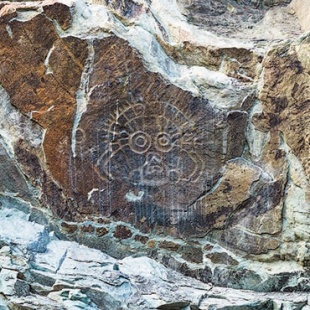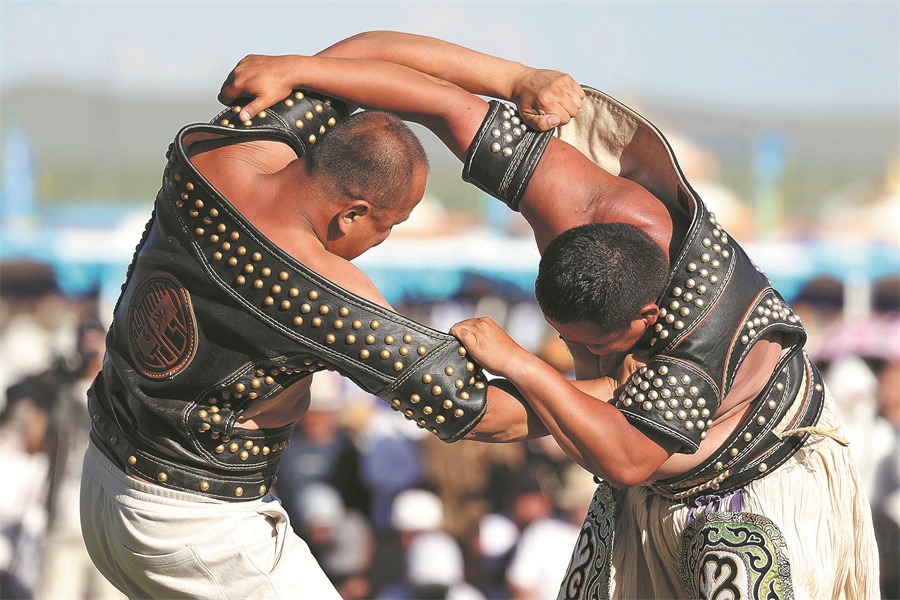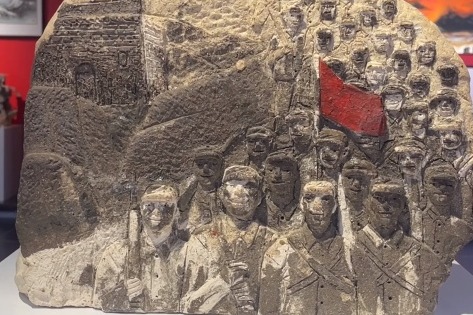Race against time to rescue rock carvings

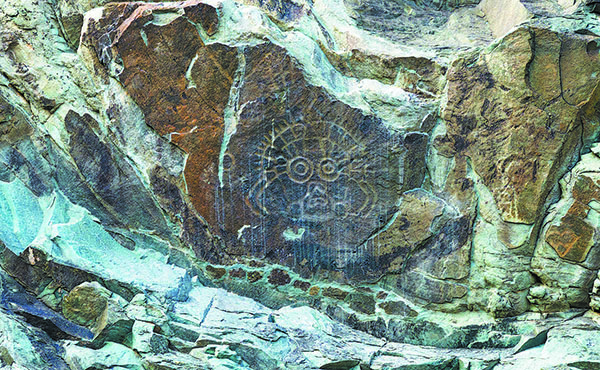
YINCHUAN — Under the scorching sun, Xu Xiaolong and his colleagues trudged through wild grass in the Gobi Desert, scanning the rocky foothills of Helan Mountain in Yinchuan, Northwest China's Ningxia Hui autonomous region, in search of ancient carvings.
Upon finding a pattern on a rock, the team immediately photographed and recorded its location.
"This field survey not only assesses the preservation status of previously discovered rock carvings but also helps identify and document new ones," says Xu, 36, who works with the city's Helan Mountain rock art administration. He explains that the work lays the groundwork for subsequent digital archiving and protection efforts.
Stretching 250 kilometers, Helan Mountain is home to more than 20,000 ancient rock carvings created by early inhabitants with stones, metal tools or mineral pigments. Dating back approximately 10,000 to 3,000 years, the carvings depict diverse subjects ranging from natural images like human faces, animals and handprints, to ancient life scenes such as herding, hunting and rituals.
Launched in 2020 as a follow-up to the 2000-2003 census, the administration has surveyed over 12 sq km in and around the Helan Mountain rock art ruins park. The fieldwork is set to continue through the end of this year.
Among the carvings, one features two handprints — one large and the other small. "The handprints likely signify 'me' and 'you', carved into the rock to seal an agreement," says Zhang Jianguo, deputy director of the administration.
He adds that affixing a handprint to documents such as deeds and contracts was a traditional practice in China, and this rock carving reflects that enduring cultural continuity.
Within the park, the deepest carving reaches 1.5 centimeters, a depth that has survived millennia of weathering. Via an experiment, the administration found that even three people carving throughout an entire day left only faint marks, indicating that a single work likely took multiple generations of prehistoric people to complete.
"We assume that it was the tribal leaders or shamans who designed the patterns, and others might have carved and deepened the grooves in the following centuries as a way of expressing faith," he says.
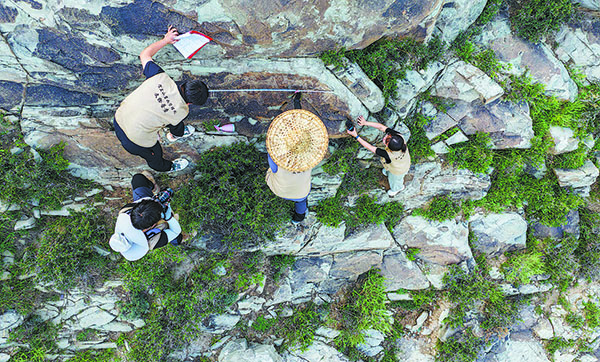
Guided tours, cultural events and creative products have boosted public engagement, with the park drawing 900,000 visitors last year.
Despite their historic significance, the rock carvings face preservation challenges like any other outdoor ancient rock art elsewhere in the world. Weathering has faded or erased many images, while freeze-thaw cycles caused by rainwater have led to cracking and peeling.
As part of efforts to strengthen protection, China's State Council designated the site as a major national cultural heritage unit in 1996, followed by the establishment of the administration in 2002. In 2003, the citylevel Helan Mountain rock art protection regulation became China's first dedicated legislation for the preservation of rock art.
Zhang, who has witnessed and been involved throughout the entire conservation journey, recalls that concrete efforts included extensive field surveys, the construction of flood-prevention dams and protective fencing, and the development of protection plans to balance tourism with preservation.
In cooperation with other institutions, the administration reinforced 20 rock faces with carvings and cracks, injecting organic materials into fissures to prevent surface peeling from 2012 to 2017. A nanomaterial coating is sprayed onto surfaces for water — and sun-proofing protection, and monitors have been installed to collect data to guide future protection work.


